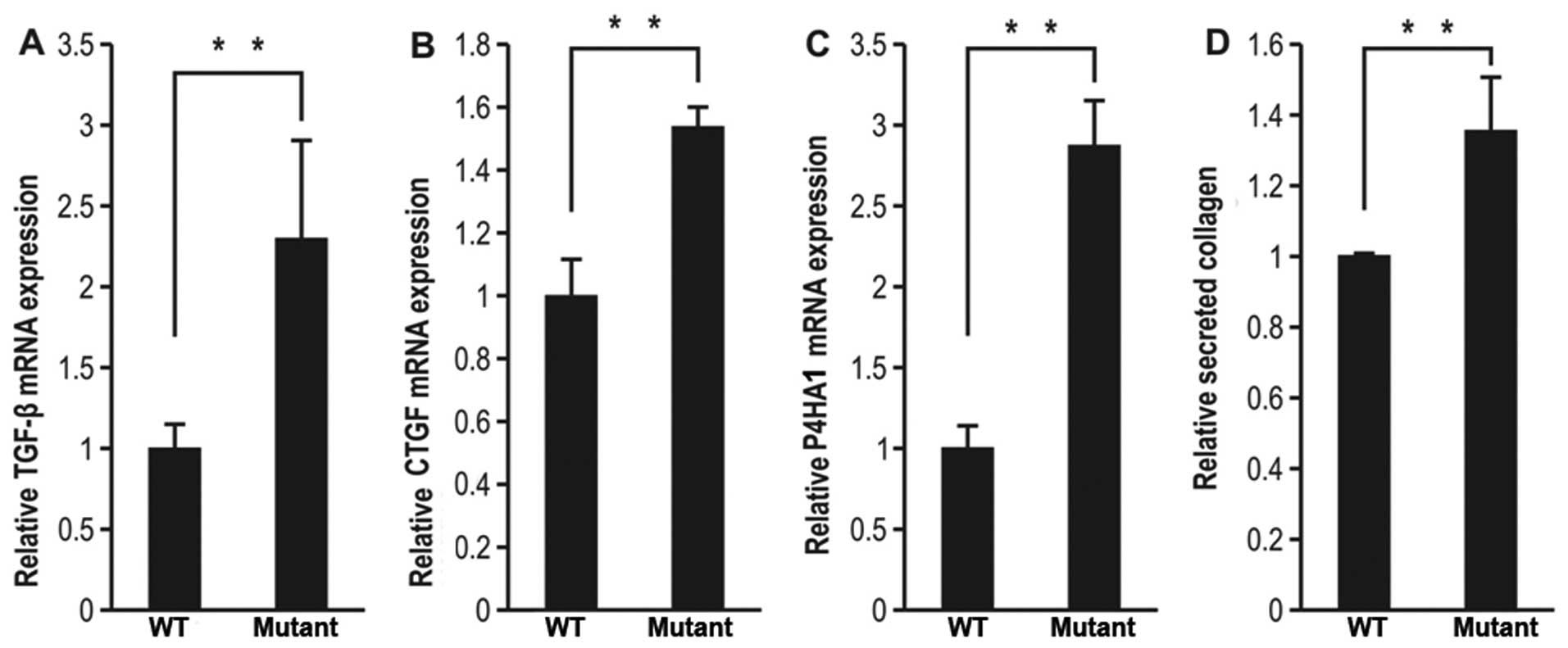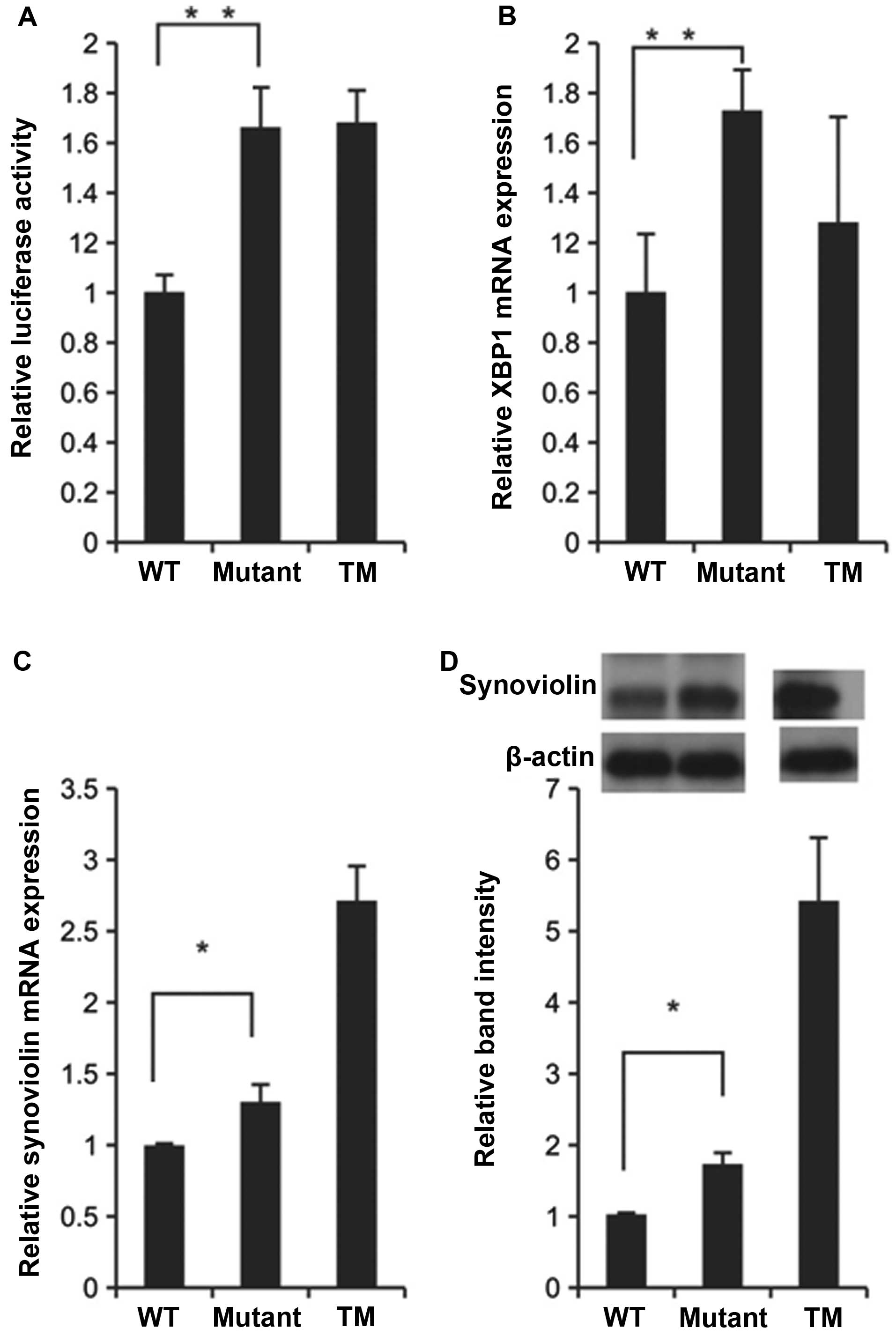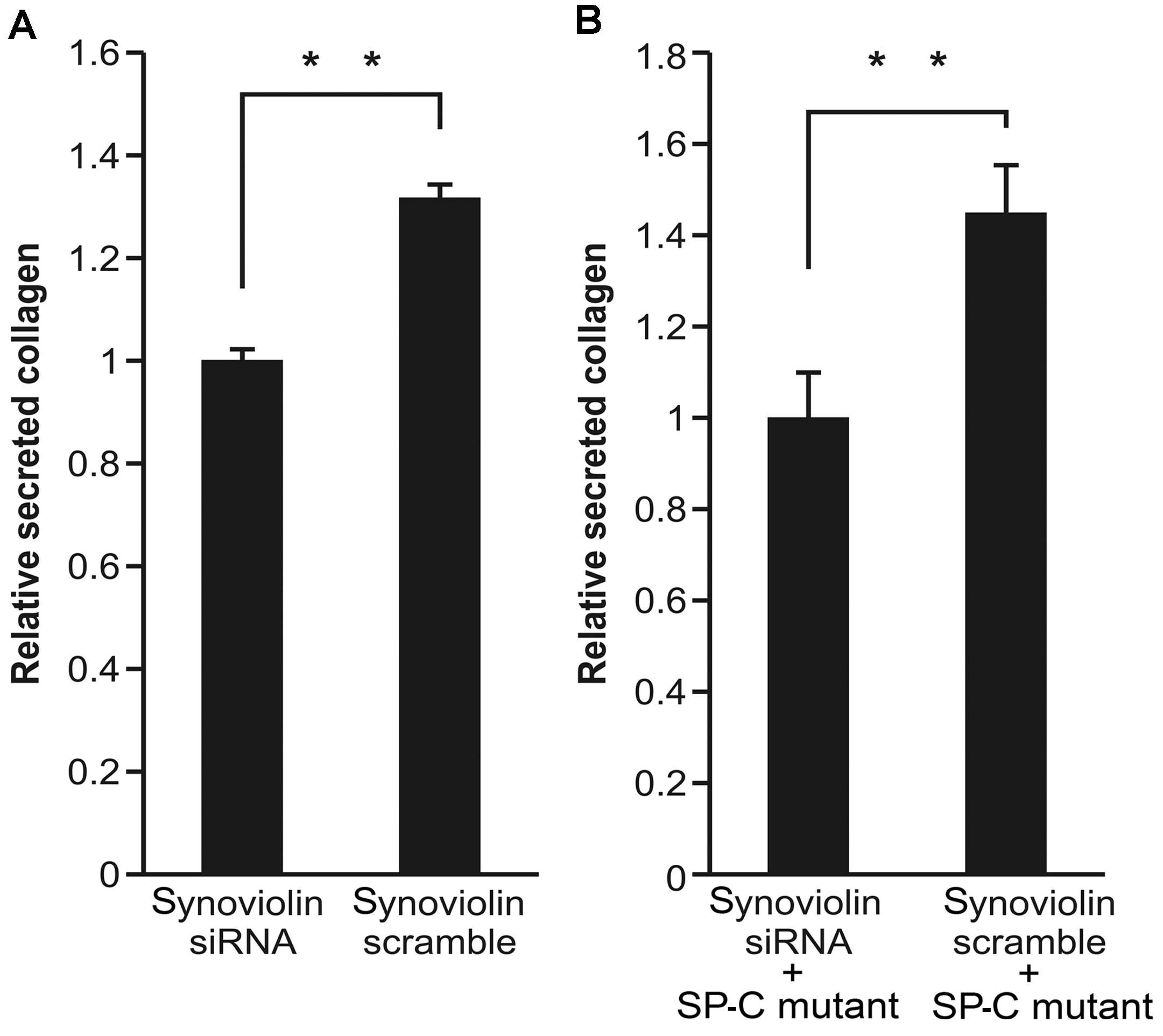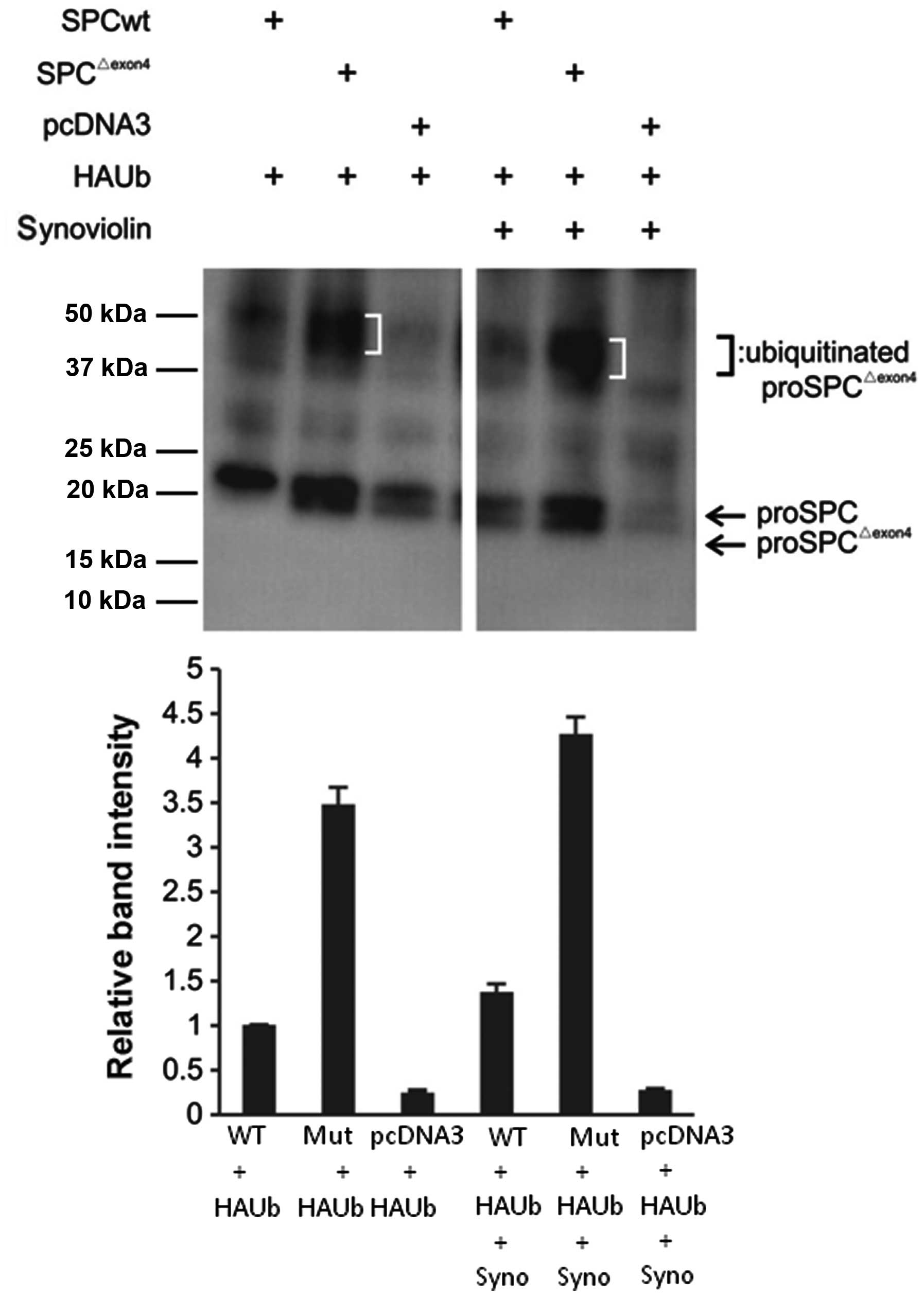|
1
|
Nogee LM, Dunbar AE III, Wert SE, Askin F,
Hamvas A and Whitsett JA: A mutation in the surfactant protein C
gene associated with familial interstitial lung disease. N Engl J
Med. 344:573–579. 2001. View Article : Google Scholar : PubMed/NCBI
|
|
2
|
Beers MF and Mulugeta S: Surfactant
protein C biosynthesis and its emerging role in conformational lung
disease. Annu Rev Physiol. 67:663–696. 2005. View Article : Google Scholar : PubMed/NCBI
|
|
3
|
Mulugeta S and Beers MF: Surfactant
protein C: its unique properties and emerging immunomodulatory role
in the lung. Microbes Infect. 8:2317–2323. 2006. View Article : Google Scholar : PubMed/NCBI
|
|
4
|
Nogee LM: Genetics of the hydrophobic
surfactant proteins. Biochim Biophys Acta. 1408:323–333. 1998.
View Article : Google Scholar : PubMed/NCBI
|
|
5
|
Mulugeta S, Nguyen V, Russo SJ, Muniswamy
M and Beers MF: A surfactant protein C precursor protein BRICHOS
domain mutation causes endoplasmic reticulum stress, proteasome
dysfunction, and caspase 3 activation. Am J Respir Cell Mol Biol.
32:521–530. 2005. View Article : Google Scholar : PubMed/NCBI
|
|
6
|
Maguire JA, Mulugeta S and Beers MF:
Endoplasmic reticulum stress induced by surfactant protein C
BRICHOS mutants promotes proinflammatory signaling by epithelial
cells. Am J Respir Cell Mol Biol. 44:404–414. 2011. View Article : Google Scholar :
|
|
7
|
Wynn TA: Cellular and molecular mechanisms
of fibrosis. J Pathol. 214:199–210. 2008. View Article : Google Scholar
|
|
8
|
Wynn TA and Ramalingam TR: Mechanisms of
fibrosis: therapeutic translation for fibrotic disease. Nat Med.
18:1028–1040. 2012. View
Article : Google Scholar : PubMed/NCBI
|
|
9
|
Hasegawa D, Fujii R, Yagishita N, et al:
E3 ubiquitin ligase synoviolin is involved in liver fibrogenesis.
PLoS One. 5:e135902010. View Article : Google Scholar : PubMed/NCBI
|
|
10
|
Li Shen LY, Ding Y, Liu Y, Su D and Liang
X: Hrd1 participates in the regulation of collagen I synthesis in
renal fibrosis. Mol Cell Biochem. 386:35–44. 2014. View Article : Google Scholar
|
|
11
|
Amano T, Yamasaki S, Yagishita N, et al:
Synoviolin/Hrd1, an E3 ubiquitin ligase, as a novel pathogenic
factor for arthropathy. Genes Dev. 17:2436–2449. 2003. View Article : Google Scholar : PubMed/NCBI
|
|
12
|
Kaneko M, Ishiguro M, Niinuma Y, Uesugi M
and Nomura Y: Human HRD1 protects against ER stress-induced
apoptosis through ER-associated degradation. FEBS Lett.
532:147–152. 2002. View Article : Google Scholar : PubMed/NCBI
|
|
13
|
Kaneko M and Nomura Y: ER signaling in
unfolded protein response. Life Sci. 74:199–205. 2003. View Article : Google Scholar : PubMed/NCBI
|
|
14
|
Wang WJ, Mulugeta S, Russo SJ, et al:
Deletion of exon 4 from human surfactant protein C results in
aggresome formation and generation of a dominant negative. J Cell
Sci. 116:683–692. 2003. View Article : Google Scholar : PubMed/NCBI
|
|
15
|
Yamasaki S, Yagishita N, Sasaki T, et al:
Cytoplasmic destruction of p53 by the endoplasmic
reticulum-resident ubiquitin ligase ‘Synoviolin’. EMBO J.
26:113–122. 2007. View Article : Google Scholar
|
|
16
|
Tsuchimochi K, Yagishita N, Yamasaki S, et
al: Identification of a crucial site for synoviolin expression. Mol
Cell Biol. 25:7344–7356. 2005. View Article : Google Scholar : PubMed/NCBI
|
|
17
|
Nogee LM, Dunbar AE III, Wert S, Askin F,
Hamvas A and Whitsett JA: Mutations in the surfactant protein C
gene associated with interstitial lung disease. Chest.
121:S20S–S21. 2002. View Article : Google Scholar
|
|
18
|
Thomas AQ, Lane K, Phillips J III, et al:
Heterozygosity for a surfactant protein C gene mutation associated
with usual interstitial pneumonitis and cellular nonspecific
interstitial pneumonitis in one kindred. Am J Respir Crit Care Med.
165:1322–138. 2002. View Article : Google Scholar : PubMed/NCBI
|
|
19
|
Border WA and Noble NA: Transforming
growth factor beta in tissue fibrosis. N Engl J Med. 331:1286–1292.
1994. View Article : Google Scholar : PubMed/NCBI
|
|
20
|
Bonniaud P, Margetts PJ, Kolb M,
Haberberger T, Kelly M, Robertson J and Gauldie J: Adenoviral gene
transfer of connective tissue growth factor in the lung induces
transient fibrosis. Am J Respir Crit Care Med. 168:770–778. 2003.
View Article : Google Scholar : PubMed/NCBI
|
|
21
|
Myllyharju J: Prolyl 4-hydroxylases, the
key enzymes of collagen biosynthesis. Matrix Biol. 22:15–24. 2003.
View Article : Google Scholar : PubMed/NCBI
|
|
22
|
Yagishita N, Aratani S, Leach C, et al:
RING-finger type E3 ubiquitin ligase inhibitors as novel candidates
for the treatment of rheumatoid arthritis. Int J Mol Med.
30:1281–1286. 2012.PubMed/NCBI
|
|
23
|
Tanjore H, Cheng DS, Degryse AL, Zoz DF,
Abdolrasulnia R, Lawson WE and Blackwell TS: Alveolar epithelial
cells undergo epithelial-to-mesenchymal transition in response to
endoplasmic reticulum stress. J Biol Chem. 286:30972–30980. 2011.
View Article : Google Scholar : PubMed/NCBI
|
|
24
|
Tanjore H, Lawson WE and Blackwell TS:
Endoplasmic reticulum stress as a pro-fibrotic stimulus. Biochim
Biophys Acta. 1832:940–947. 2013. View Article : Google Scholar :
|
|
25
|
Zhong Q, Zhou B, Ann DK, et al: Role of
endoplasmic reticulum stress in epithelial-mesenchymal transition
of alveolar epithelial cells: effects of misfolded surfactant
protein. Am J Respir Cell Mol Biol. 45:498–509. 2011. View Article : Google Scholar :
|
|
26
|
Hogaboam CM, Steinhauser ML, Chensue SW
and Kunkel SL: Novel roles for chemokines and fibroblasts in
interstitial fibrosis. Kidney Int. 54:2152–2159. 1998. View Article : Google Scholar : PubMed/NCBI
|
|
27
|
Arai M, Ikawa Y, Chujo S, et al: Chemokine
receptors CCR2 and CX3CR1 regulate skin fibrosis in the mouse model
of cytokine-induced systemic sclerosis. J Dermatol Sci. 69:250–258.
2013. View Article : Google Scholar
|
|
28
|
Fernandez IE and Eickelberg O: New
cellular and molecular mechanisms of lung injury and fibrosis in
idiopathic pulmonary fibrosis. Lancet. 380:680–688. 2012.
View Article : Google Scholar : PubMed/NCBI
|














